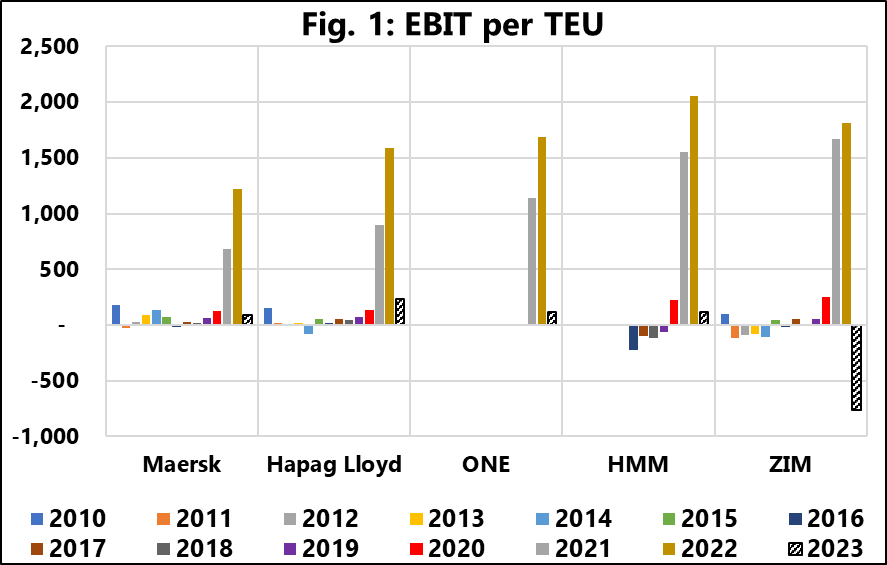Ocean liners saw a decline in revenue last year due to excess capacity, but figures indicate a return to pre-pandemic profitability, according to a new Sea-Intelligence report.
"In 2023-FY, all shipping lines saw a sharp year-on-year (Y/Y) decline in revenues, ranging between -46.6% and -62.6%," the report said.
"However, the annualised revenue growth rate in 2023-FY is in line with 2018-2019, which suggests that the sharp Y/Y revenue decline in 2023-FY is an artefact of the abnormal revenue growth of 2021-2022 rather than a fundamental revenue loss in 2023" it added.
Sea-Intelligence noted that ZIM, Yang Ming, and Wan Hai all recorded EBIT losses in 2023-FY.
But while four shipping lines had an EBIT of over US$1 billion, the report said what is clear is that profitability levels are nowhere near those in 2021-2022.
"EBIT per TEU is one way to visualise profitability," Sea-Intelligence said.

[Source: Sea-Intelligence]

[Source: Sea-Intelligence]
"Figure 1 shows EBIT for 2010-2023 and shows the unprecedented levels of the 2021-2022 pandemic period, whereas Figure 2 cuts off the y-axis at +/- 300 USD/TEU to show the developments in 2023," it added.
The report noted that so far, it has the EBIT/TEU data for 5 shipping lines (COSCO and OOCL haven’t published yet, and CMA CGM does not publicly publish EBIT anymore).
It said that although Maersk's EBIT/TEU of US$94/TEU is significantly lower than in 2021-2022, it is still higher than most of the pre-pandemic years, whereas, for Hapag-Lloyd (US$235/TEU), it is the highest outside of 2021-2022.
The report noted that for ONE (US$116/TEU), Sea-Intelliegence does not have a pre-pandemic reference point.
"While for HMM, their 2023-FY EBIT/TEU of US$119/TEU is lower than in 2020 but is still better than in 2011-2019 (where they were not profitable at all)," Sea-Intelligence said.
"ZIM’s EBIT/TEU loss of -US$765/TEU is driven by a 'non-cash impairment loss of US$2.06 billion recorded in the third quarter," the report added.